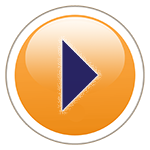Book choices for today:
What is a Vertebrate? Bobbie Kalman
Vertebrates Ted O’Hare
Vertebrates Christine Petersen
My Nose Your Nose Melanie Walsh
My Legs and Feet Lloyd Douglas
Here are My Hands Bill Martin Jr
Zoology: (first circle)
Need for lesson – Model of a vertebrate column, Vertebrate Groups Cards, and Vertebrate / Invertebrate Sorting cards.
Zoology 1
When we learn about animals we call it Zoology. Can you say “Zoology”? There are so many different kinds of animals on the earth. There are millions! Zoologist and other kinds of scientist organized the animals into groups. The two main groups of animals are vertebrates and invertebrates.
The first group of animals we will learn about are the Vertebrates. Can you say “Vertebrates”? These animals may look different but they all have something the same. They all have something like this in their bodies. (show vertebrate column or a picture of one).
These are bones. Bones are found inside the body. When we talk about the bones in an animal’s body, we are talking about the animal’s skeleton.
There are so many animals that have a backbone that scientist decided to divide these into classes or groups to make it easier to learn about them. (If your school has different classrooms this is a good time to compare and talk with children about how the children in the school are grouped into different rooms). We even have a backbone. Feel yours or the friend sitting next to you.
There are five different kinds of vertebrate groups or classes. Let’s look at what they are. (Show each card from the Vertebrate Group card set, naming each group, pointing out it’s backbone). There are reasons why each vertebrate animal is put into each class. We will find out why by learning about one group at a time. We will begin with the mammals group during our next Zoology lesson.
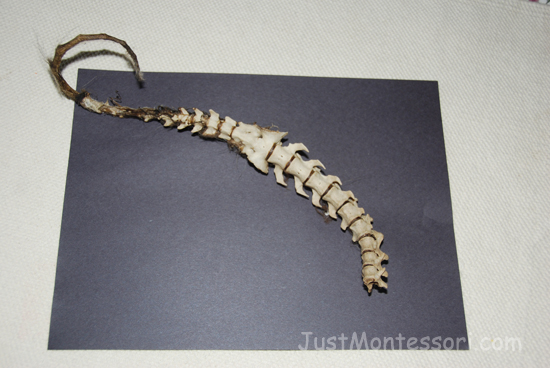
This backbone was from my brother-in-law. What a great find! He lives on a ranch and he finds some really neat things. I placed it on black paper so it would be easier to see.
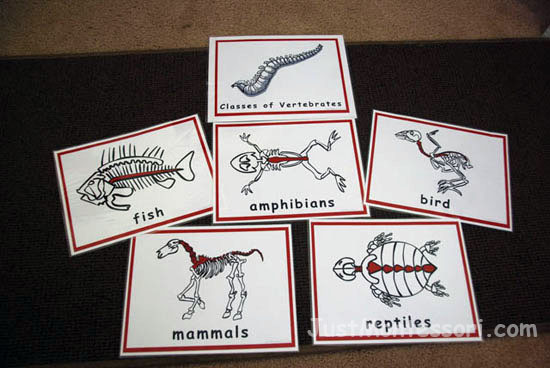

Additional Works:
Vertebrate Booklet – Children can color the vertebrate of each animal class represented.
Vertebrate Matching Cards – Children can match the animals with it’s skeleton shape.
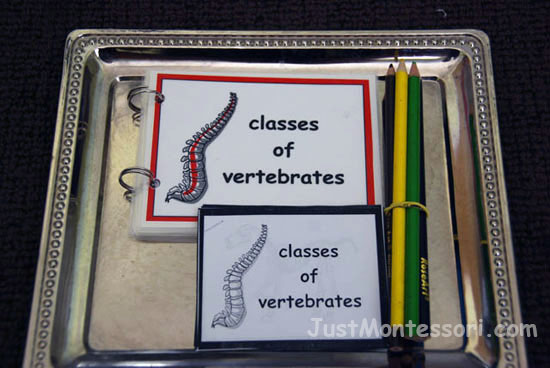
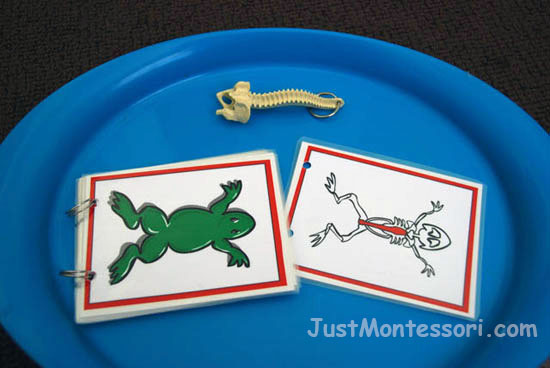
Art:
Sorting – Gather various magazines with a variety of animal pictures. Have children cut out pictures of animals and glue them onto a piece of construction paper with a line down the middle having one side labeled vertebrates and on the other side labeled invertebrates.
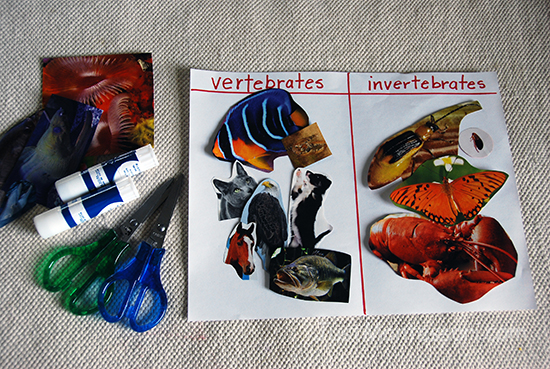
Songs/Poems:
Vertebrates – Use vertebrate groups cards during poem.
Five classes of vertebrates we all know
1st are the fish that swim wherever they go
2nd are the amphibians on land and in water,
They grow and change to look like their mother and father
3rd are the reptiles that lay their eggs on the ground
4th are the birds that fly all around
5th are the mammals, our last class of animals
Five classes of vertebrates, we all know
because they all have vertebrae all in a row!
(I learned this poem from a teacher I worked with in California, my husband refined it.)
Science: (second circle)
Need for lesson – Three-part Body Matching cards and Body Parts Booklet.
Science 4
Adults, babies, children, and teenagers are all human beings. Their bodies are all made the same way, but we are all different. No two people are exactly alike. Remember we talked about how special you are! You are so special that if you look very closely at your fingertips you will be amazed. Why? Each person all over the world has their very own set of fingerprints. My prints do not match anyone else, they are unique to me, and yours are unique to you. Each person has their own fingerprint pattern of lines and curves. That is amazing!
People who belong to the same family are more alike than others. Twins are the most alike. There are humans all over the earth. Human bodies all work the same way, but they are all different. Our size, color of hair, and the shape of our noses make us all look different from one another. The human body is made up of different parts. Different parts of our body hep us to do different things.
Demonstrate Three-part Body Matching cards and ask children what some of the jobs body parts do; eye-see, legs-walk.
Demonstrate Body Part Booklet and show the children how they can make their own booklet. Have on the tray skin tone pencils, red pencil, and No.2 pencil for labeling and coloring their booklets.
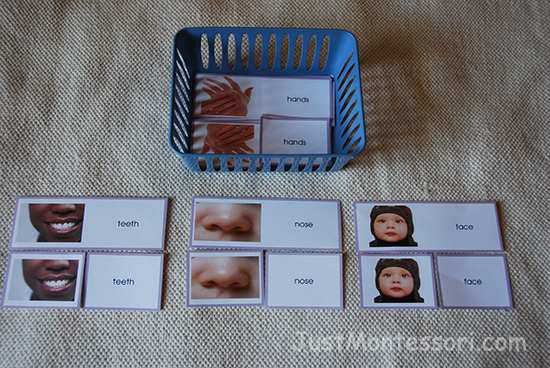

Additional Work:
Fingerprints – This is a fingerprint kit that you can find at hobby or craft stores.
What is Missing – On these cards a body part is missing, children try to find which one on each card.

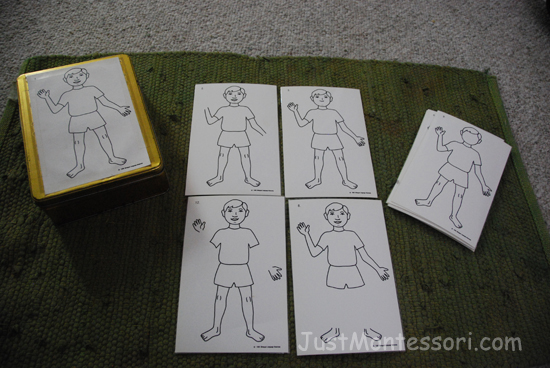
Song (CD) choices for today:
Body Rock Kids in Motion
Put your Hands on Your Head Frank Leto
Movement Kids in Motion
Clap Your Hands Nancy Raven
Buy Weeks 1-5 PDF
-
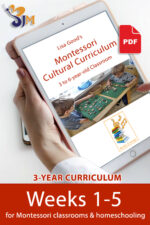 (B) Weeks 1-5$25.00
(B) Weeks 1-5$25.00


